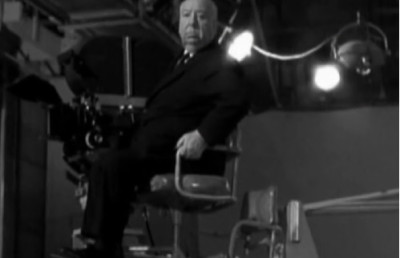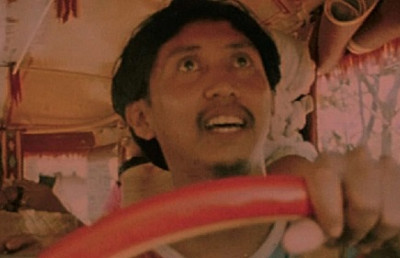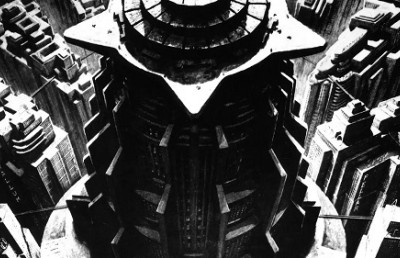Citizenfour: Decrypting State Voyeurism
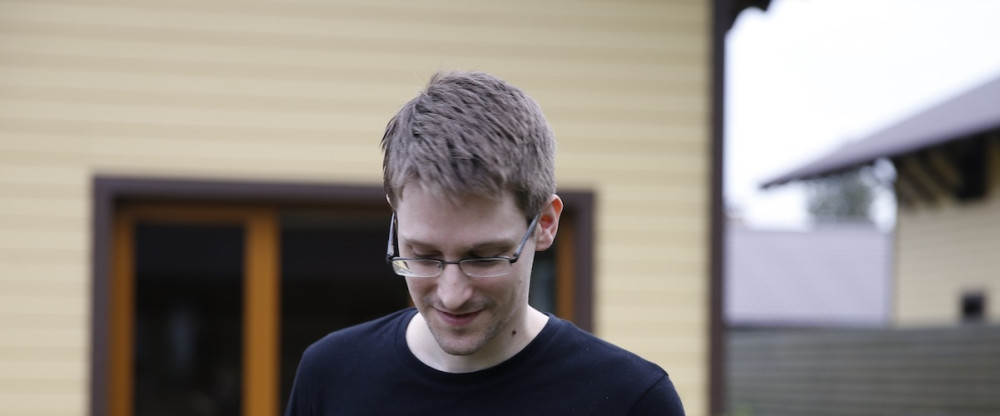
“What people used to call liberty and freedom, we now call privacy. And we say, in the same breath, that privacy is dead.” – Jacob Appelbaum
When we think of voyeurism, one might picture Jimmy Stewart with his long lens camera, and the object of his investigative eye. A simple relationship between watcher and watched. That idealised and straightforward image of the individual watcher has now given way to something more sinister. Voyeurism is infinitely more complicated in 21st century digital spaces, where our selves are no longer a constant self-contained subject, but rather an atomised being of scattered data, vulnerable to a machine of control without any oversight which, conforming to essential concepts of voyeurism, is built to dictate our image. There are no longer limits on its intrusions, no edges to our voyeurs’ lens, or walls for us to hide behind.
The question is no longer who is watching us; watching is assumed. It is a ubiquitous practice that occurs regardless of intent or action on the part of state or citizen. The question has now become: how to conceptualise the practice of pervasive surveillance to best equip its victims with a means of understanding and resistance. Edward Snowden’s NSA leaks brought to light and into focus the fundamental betrayal behind this dissolution of personal freedoms, and in a very literal way, opened the eyes of the world. In providing citizens with the information that they were being watched, the watchful eye could be turned back on those who “surveil” from darkness.
Following 9/11, as former NSA intelligence official William Binney explains early in Citizenfour (2014), a culture of fear took hold of the US government. A control society was defined, allowing the movement and data of citizens worldwide to be vulnerable to state possession. The gathering and storing of this data has no barriers of space or time. Their possession in perpetuity removes any temporal barriers to surveillance, allowing for retroactive searches of our activity, and opening up the possibility of pre-crime determinism to creep into international security, akin to Spielberg’s Minority Report (2002) dystopia.
As Snowden expresses throughout Citizenfour, the danger of surveillance is in its control, providing imagined borders to social activity and inducing a curtailment of intellectual exploration. Individual subjectivity is dissolved and our selves become digitised and compacted to binary information. As Gilles Deleuze discusses in ‘Postscript on the Societies of Control,’ “individuals have become ‘dividuals,’ samples, data, markets, or ‘banks.’” The power of codes authorises more effective and efficient control of the public by reducing their being to sets of data. Surveillance is control; voyeurism is control of the image.
Citizenfour is a crucial document in revealing abstract systems of government voyeurism, in processing those revelations, and in reflexively considering the voyeurism inherent to the exercise of filmmaking. The film follows Edward Snowden’s exposure of NSA surveillance systems, and his collaborations with journalists Glenn Greenwald and Ewan MacAskill. Director Laura Poitras herself is an essential cog in this collaboration, ultimately forming this film as a document of the process.
Beginning with a contextual exploration of the conditions and discourse surrounding surveillance in America, Poitras then builds an encrypted dialogue with ‘Citizen Four,’ a high-ranking NSA employee who wishes to expose crucial information. The employee is revealed to be Snowden, and the rest of the film follows the negotiation surrounding the leaking of this information, and the fallout for everyone involved.
The film proves the vitality of whistleblowers such as Snowden, and other activists that the film highlights, without whose work the very fabric of C4 (a film comprised of encryption) would not be possible. Work such as theirs is increasingly essential to any form of meaningful resistance to a regime which operates without any judicial or legislative accountability.
State Voyeurism
Introduced by Poitras’ own experience as an object of state surveillance following her two previous post-9/11 excavatory documentaries My Country, My Country (2006) and The Oath (2010), the very idea of a ‘watchlist’ exemplifies the inherent importance of voyeurism to oppression. At the time, many activists and journalists were likely included on such a list, although the exact number was unknown, and remains so today, although all we do know is that number is exponentially higher than a decade ago. Poitras’ position as a victim of that voyeurism uniquely places her to both be passionate enough to explore the topic so fully, and capable enough to produce the film under the threat of government action.
Poitras begins with the relevant surrounding circumstances of government secrecy. Footage of senate hearings are played, featuring NSA Director Keith Alexander and Director of National Intelligence James Clapper blatantly lying to the oversight committees intended to at least superficially maintain public trust in their system. The senators’ questions play almost like a list of charges, the answers to which are irrelevant due to the blanket response of denial.
More detail to those charges is supplied by whistleblower testimony, with both former NSA officials like William Binney retroactively exposing the secrets of an apparatus to which they were once essential, and anarchist activists like the now-disgraced Jacob Appelbaum [https://www.theguardian.com/technology/2016/oct/11/jacob-appelbaum-tor-project-sexual-assault-allegations] discussing the philosophical implications of data possession.
Appelbaum’s speech at an Occupy Wall Street security training event highlights the importance of metadata to surveillance. The state is able to construct a true, yet misleading portrait of individuals based on a tapestry of single data points, through what he terms “linkability.” By analysing grains of information such as bank transactions and metro card activations, the government can construct and project a factually consistent image of us which can then be used against us in any way they wish. The objectification of citizens is therefore made by digitising beings and separating those digital prints from us to construct a data-driven portrait which is entirely out of our control.
Snowden’s description of TEMPORA, the UK’s surveillance system, takes this one step further. He describes it as the first ‘full take’ approach to surveillance, combining content and metadata on everything and querying all day to gain unrestricted access to public lives. The retroactive ability to view the history of this data also removes any temporal restrictions, providing an eternal data portrait.
There is therefore great importance to risk-taking activists and thoughtful artists in resisting this. Trevor Paglen, whose footage of data banks is used throughout Citizenfour, is a digital artist and activist. While he provides no testimony himself, his footage illustrates the silent power of simply turning the camera back onto our voyeurs. Data banks such as the Utah repository and NSA facilities in the US, the UK and Germany are filmed from a distance to uncover the secretive sites of information collection. It’s hard to fathom the significance of these bulbous deposits of data, but each signifies the massive infrastructure behind the millions of points of access that the state has to its citizens. By filming what he calls “blank spots on the map,” Paglen is able to make the invisible visible.
In an interview with Vice, [https://www.vice.com/en/article/qkv8ww/the-geography-of-secret-places-watching-the-watchers-with-trevor-paglen Paglen discussed the significance of secrecy to state voyeurism. He wanted to change the one-way mirror system of controlling the image of those below while hiding their own. Looking at the media ban in California prisons, his exhumation of the abuse taking place aligns with Jeremy Bentham’s concept of the panopticon. His structural design of prison surveillance allowed for one security guard to observe every prisoner without themselves being seen. Paglen’s attitude seems corroborative towards Poitras’, that NSA secrecy is not in fact a complex web of espionage, so much as it is a system that denies the possibility of any democratic or judicial oversight.
In a particularly prescient comment, Paglen also questions the future boundaries of state voyeurism, asking whether the NYPD will need a warrant by 2020 to park a surveillance drone outside his window for 24 hours a day. There is unfortunately still no clear answer to this question, due to a lack of federal consensus on drone policy and an endless list of variable circumstances which could justify their use. Nevertheless, the access to such technology by local police, regardless of judicial complication, is dangerous. In 2021, Poitras released another piece on surveillance titled Terror Contagion, as part of the pandemic-themed collaborative compilation Year of the Everlasting Storm. In this, her investigation does find similar ideas to this, analysing how technological capabilities which were once reserved for federal or military branches, were now in the hands of local police. Due to this atomisation and dispersion of aggressive and intrusive tactics of terror, the idea of state voyeurism has become exponentially worse even since the release of Citizenfour.
Without artists like Paglen and Poitras speaking out, how much public knowledge of this would we have, and how would we be able to effectively respond given the lack of checks and balances?
Citizenfour’s footage of ongoing litigation over AT&T data collection shows how difficult it is to push any form of public resistance through the judicial system. While this particular case began in 2006, at the time of filming it remained in preliminary stages. The representative of the people concisely sums up the state’s argument against the clients attempting to sue: “as long as everyone is surveilled, no one has standing to sue.”
Continuing with legal complexity, Snowden is indicted under the Espionage Act — a law intended for wartime prosecution of international spies leaking information. The absurdity of this is commented on by his legal team, suggesting that the state themselves are aware of its idiocy, yet only wish to create as much bureaucratic complication as possible. Snowden was not alone in this treatment. The Espionage Act, originally passed in 1917, was revived by the Obama administration and attempted to prosecute more people than all previous administrations combined.
The fantastical nature of Snowden’s leaks suggests an almost science-fiction dystopia, with retinal scans and pre-crime determinism akin to Spielberg’s Minority Report (2002). The espionage of their hotel room sequences provides an exciting atmosphere. At one point, Snowden unplugs the hotel room phone, realising his error in not doing so earlier. All new VOIP phones, he tells us, can be remotely hot mic’d for anyone to listen in. Adding to the hypothetical air of encroaching threats is the sudden, intermittent fire alarm. “Maybe they got annoyed they couldn’t listen in on us anymore,” Snowden suggests half-jokingly. His use of ‘they’ to describe their omniscient listeners points to the inanimate presence of voyeurs. Even the objects around you are vulnerable to being infiltrated and overtaken by the state, in a _Matrix_-style Agent program. The atmosphere of anxiety is only ramped up after the release of Snowden’s official interview with Greenwald. The room becomes more urgent, with physical mess beginning to pile up around him. He changes his appearance slightly, and tests using an umbrella to cover his face, hoping to block the bird’s-eye view he’s sure will be leering.
Poitras herself is, and continues to be, a target of this espionage. After Snowden has left Hong Kong, she hopes to stay and continue filming. Pursued by anonymous followers, she instead flees to Berlin. For a brief period, their intimacy in the physical confines of the room, along with Greenwald and MacAskill, sustained a quick-moving collaborative process. Yet now they are forced to return to the stuttered process of encrypted emails. She further speculates she would be unable to return to the US. Greenwald concurs, suggesting for him the best-case scenario upon re-entry would be a subpoena for his involvement. In her follow-up film Risk, which follows Julian Assange over a number of years, she returns home to find the door unlocked. Did she leave it open? Did someone break in? She doesn’t know, and never will, but the feeling of paranoia has permeated every aspect of her life, and likely with good reason.
Citizenfour’s Resistance
Snowden’s leaks, and Citizenfour, provide a detailed and comprehensive impression of the vast apparatus of state voyeurism. Viewing this in such an unrestricted format also calls into question our position as watchers, and how Citizenfour contends with its own voyeurism. PrivAc, Snowden tells us, is the highest grade of access granted to NSA employees. Their ability to view all classified levels of documents aligns with our own privileged views of his life at its most vulnerable moments. Poitras plays with this idea often in her aerial and external shots. In many ways, they conform to traditional documentary practice, yet her establishing shots take on a greater meaning when thematically embedded between conversations on the dangers of an omniscient camera.

Crone camera Voyeurism
Binney’s introduction comes with drone shots of his suburban house, almost mocking the NSA tactics which he helped to establish and now disavows. His life, like all others, is just as vulnerable to that omniscience. By paralleling the devices by which we can be watched, Poitras reflexively reveals the very powers she will help expose. Her establishing shots of the hotel room, where much of the film takes place, bring about a similar feeling. The external wide shot of the building shows its glass walls as permeable; accessible. Each window appears like an access point, through which a whole other life could be examined and exposed to the world just as Snowden’s is.
The entrance into their world is reminiscent of one of the great voyeur films, Alfred Hitchcock’s Psycho (1960). In its opening scene, Hitchcock employs a similarly sweeping shot of the city skyline, with the cars and people below appearing like ants. The camera pushes in gradually, fading from the wide to a medium of a specific hotel and pushing further to and through a specific window. Inside is the scandalous image of a couple, post-sex, partially naked. This conjures both a voyeurism to a privileged image, and a sense that any other building; any other window, could have been chosen and mined for something equally intimate.
Similarly, Poitras’ use of bird’s-eye shots elicits a feeling of omniscience akin to that of surveillance satellite images. Below on the ground, cars move as an organised mass, and within them people; people whose movements are beholden to our eye. Aligning with Deleuze’s notion of codes and data, this portrait is devoid of humanity. The broad scope of depthless buildings looks almost like a circuit board, providing us with no sense of the interiority of each miniature individual, yet nevertheless providing us with exact data of their movement.
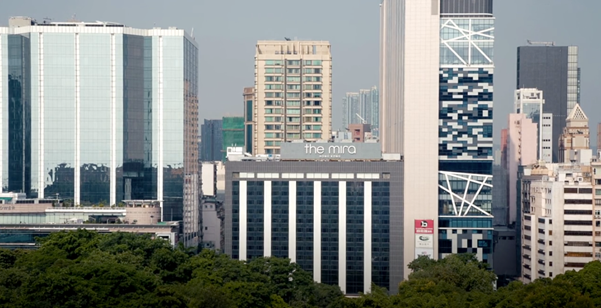
The most direct of these visual parallels comes towards the end of the film. Snowden has finally been joined in Russia by his partner Lindsay Mills. Poitras, on her return to show the couple the near-complete film, parks herself across the street and films their quotidian activity, comparable to Rear Window (1954). The naturalist feel to this highlights their lack of awareness. It’s a double-sided shot, both evoking a sense of normalcy and peace for them, yet also demonstrating they will never be free of a watchful eye. Even the most banal of their activities is, in the eyes of the US government, worthy of intrusion and possession.
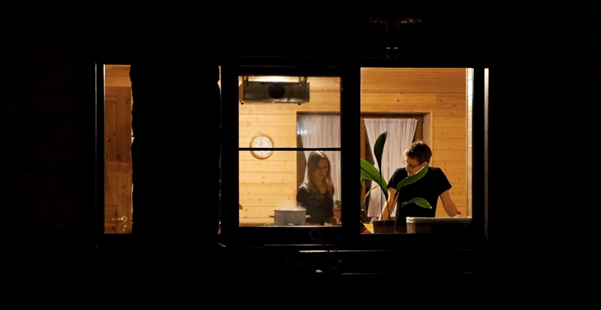
These brief inserts appear intended to place us in the perspective of the anonymous state voyeur, but the majority of the film is made along the principles of cinema vérité documentary style. This involves an observational technique of passively watching events unfold in real time, capturing the moment-to-moment developments. The theory behind this was that by avoiding reconstructing events or retroactively editorialising them, a deeper sense of Truth is conjured. Through this approach, Citizenfour alters our perception of events from a state-dictated voyeurism to a re-injection of humanity.
Jeanne Hall, whose discussion of D. A. Pennebaker’s Don’t Look Back illustrates cinema vérité’s claim to a privileged access to the Truth, said this of the discipline:
It’s possible to go to a situation and simply film what you see there, what happens there, what goes on, and let everybody decide whether it tells them about any of these things. But you don’t have to label them, you don’t have to have a narration to instruct you so you can be sure and understand that it’s good for you to learn. You don’t need any of that shit.
Poitras identifies with this principle of looking and listening without intervention:
I did not want to make a personal essay film. It can be limiting.
This intimacy is often a result of being present for the less thrilling moments; the moments that would never make the cut for network news. The minutiae of conversation are given time to breathe. Nothing is assumed or taken for granted. MacAskill even asks Snowden to tell him his name, something the man of infamy had even himself assumed would already be known. The arena of revelation that the hotel room becomes is in fact largely uneventful. Snowden watches TV, orders dinner, styles his hair in the mirror. There’s a humanity to these quieter moments, knowing that this isn’t a man who exists only in our idealised/demonised image of celebrity, but rather a real person.
By drawing back the curtain on these moments, we gain a more dynamic, full view of footage that was publicly released at the time — Snowden’s viral interview with Greenwald in which he revealed himself as the source of several high-profile leaks in the previous days. Filmed in the same hotel room as we have seen, the environment of the interview is somehow different in its layout. We see the introductory moments, outtakes and slip-ups, all of which would be trimmed and crystallised for mass consumption. The visual conceit of merely seeing around the sides of the frame in the public interview feels like entering a fixed image and being able to explore its interior world.
After seeing the interview live in this way, Poitras cuts to the media fallout, filming Snowden’s image cast onto vast billboards. This juxtaposition of media highlights an essential part of the origin of vérité style. The emergence of vérité as this new form of observational documentary was in part a response to overly-prescriptive documentary forms of media. Newspapers, television news, even radio. TV network news in particular presents an often didactic bias which actively informs rather than reports. Throughout Citizenfour, Poitras highlights the complexity and limits of this ecology of media.
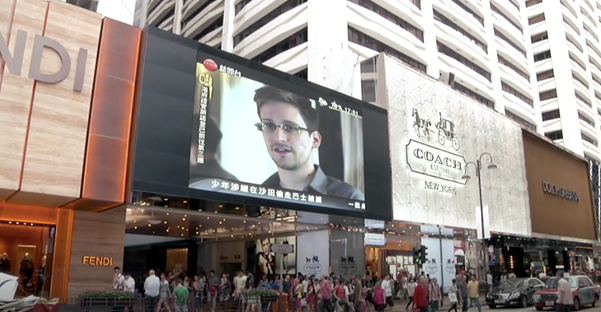
The detritus of network news demands constant content, with journalists and paparazzi doggedly pursuing Greenwald as he goes about his day. Trapped in an elevator by an oppressively bright flashlight on one of these such cameras, we see the contrast between Poitras’ camera and that of the media. Poitras observes and listens, whereas the faceless paparazzo invades Greenwald’s physical space, peppering him with a flurry of questions, desperate for any usable soundbite.
As Poitras channel-surfs the news media debris, the cluttered and urgent television frames directly juxtapose her patient and minimalist technique. Too much information for any one viewer to take in, the insistence on ‘breaking news’ leaves the subject with no thoughtful coverage, but rather only brief and superficial snippets. Pixels are rearranged as events are reinterpreted, only able to cobble together disassembled ideas to recreate a sense of What Is Happening.
Snowden is himself very wary of this treatment by the media, insisting he not be the story in an environment with intense focus on personality. That fear is warranted, as he does become the story to a certain extent. His actions become stripped of meaning, and he’s left only as a recognisable name of someone who leaked something. The broader implications for public awareness are left by the wayside of sensationalised reporting. The inclusion of this chaotic ecology of news media reinforces the distinct nature of Poitras’ careful vérité approach.
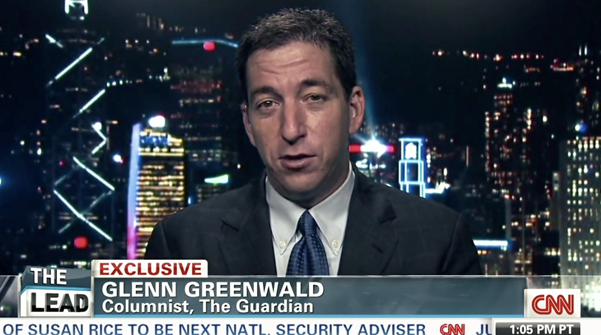
Her constant watching could, however, be seen as voyeurism is itself. But Poitras takes a more active role than objectifying watcher, and shifts the film from being just another artefact of media in Snowden’s complex tapestry, into being a statement of intent towards resistance to voyeurism. Robert Allen’s perspective on vérité in ‘The Beginnings of American Cinema Vérité’ suggests that “by exposing social problems without explicitly commenting upon them, vérité documentaries leave solutions to problems outside the film.” In a sense this is a liberating modality of filmmaking, requiring “no specific alternative programmatic to present.” The films of Frederick Wiseman, for instance, act as fly-on-the-wall pieces. His early films Titicut Follies (1967) and High School (1968) merely offer up a broken institutional system. While thoughtfully constructed in their presentation, the audience is only aware of the deep need for change, rather than the imposition of method for that change.
However, Poitras distinguishes herself in that Citizenfour does in some ways present solutions. As a film born of encryption, the very tactic that can and should be used to combat the apparatus it is criticising, it implicitly presents both the need and means for change. Poitras is herself a participant in this as a journalistic exercise. While different to the immediacy of Greenwald and MacAskill’s articles, Citizenfour is itself a document of resistance and revelation.
Beginning with her communications with Snowden, Poitras operates with the very tools she and other activists are discussing. Trading encrypted messages back and forth, Poitras provides voiceover to their early conversations. Snowden’s identity is entirely protected, and the visual control of the plain white text on black screen functions as the polar opposite of his fragmented image spread across billboards. In the film’s closing credits, the software tools used throughout are listed, free for public use. These technologies form a crucial nervous system of the film, and suggest to us that we can protect ourselves equally from watchful eyes. Thus, bucking assumptions of cinema vérité’s passivity, Poitras does provide an effective challenge to state voyeurism.
And not only in the individual encryption tools, but more so in the collaborative network formed by film’s key players. So much of Citizenfour is the dynamics and exchanges between Snowden, Poitras, Greenwald and MacAskill. In negotiating how to reveal Snowden, they develop a meticulous system for how to keep data secure, how to release it to the public, and how to navigate government backlash. While Snowden is isolated as the icon of news media frenzy and government vitriol, Poitras finds humanity in the co-operative process essential to whistleblowing.
Discussing the personal relationships she forms through her films, Poitras said this:
I like to work with people that I can spend time with. I like to surrender to that.
Her care for Snowden is evident in a particularly neat shot comparing his image on television and his image in the mirror. Snowden is reflected back to us across two parallel panes of glass. The first is the television feeding his interview back to him. This prescribed image of him is contrasted by the dynamic image as he observes himself in the mirror adjacent to the television. Poitras films him with patient care, allowing him to mutter to himself and speak about how he really feels. The jarring juxtaposition between the fixed loop of his compacted object and his actualised self in the present highlights the depth Poitras brings to her subjects.
As she demonstrates throughout, the apparatus of surveillance is built to elide the people into sets of data, which are then possessed and controlled by corporations and state institutions. Voyeurism is no longer a meaningful individual practice when it has become a constant and codified pre-requisite to existence.
The absolute and unrelenting intimidation of this makes significant resistance both an impossible, and essential task. Citizenfour is exemplary of the co-operative and thoughtful challenges that can be made. News media attempt to diminish collective activism and decree Snowden as a solo, and therefore dismissible, icon of betrayal. But Citizenfour finds Truth beyond all other intrusive cameras. By returning humanity to the process of this challenge, Poitras crosses the boundary from voyeur to activist and finds the richness of the human spirit unconstrained by data.


